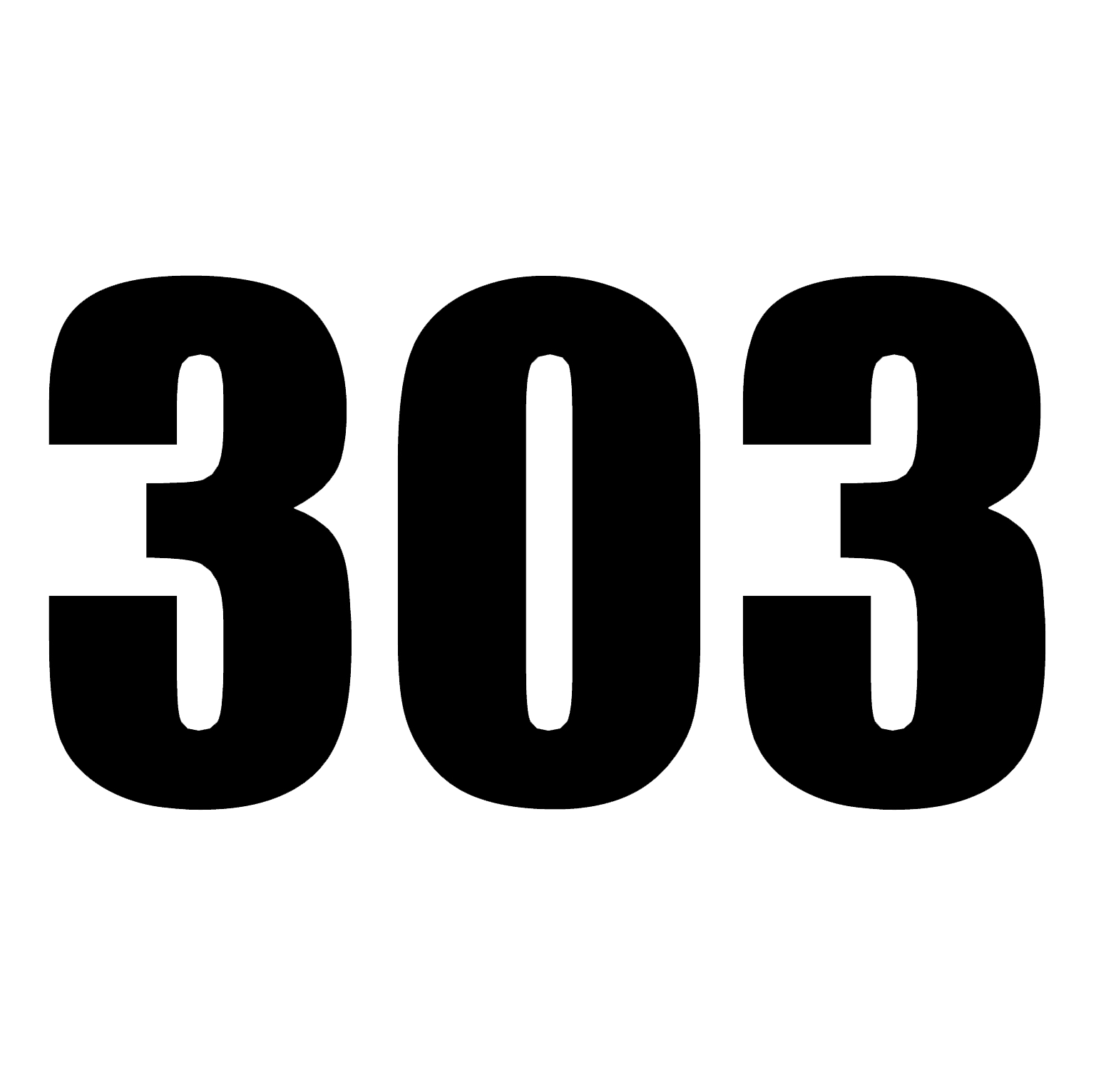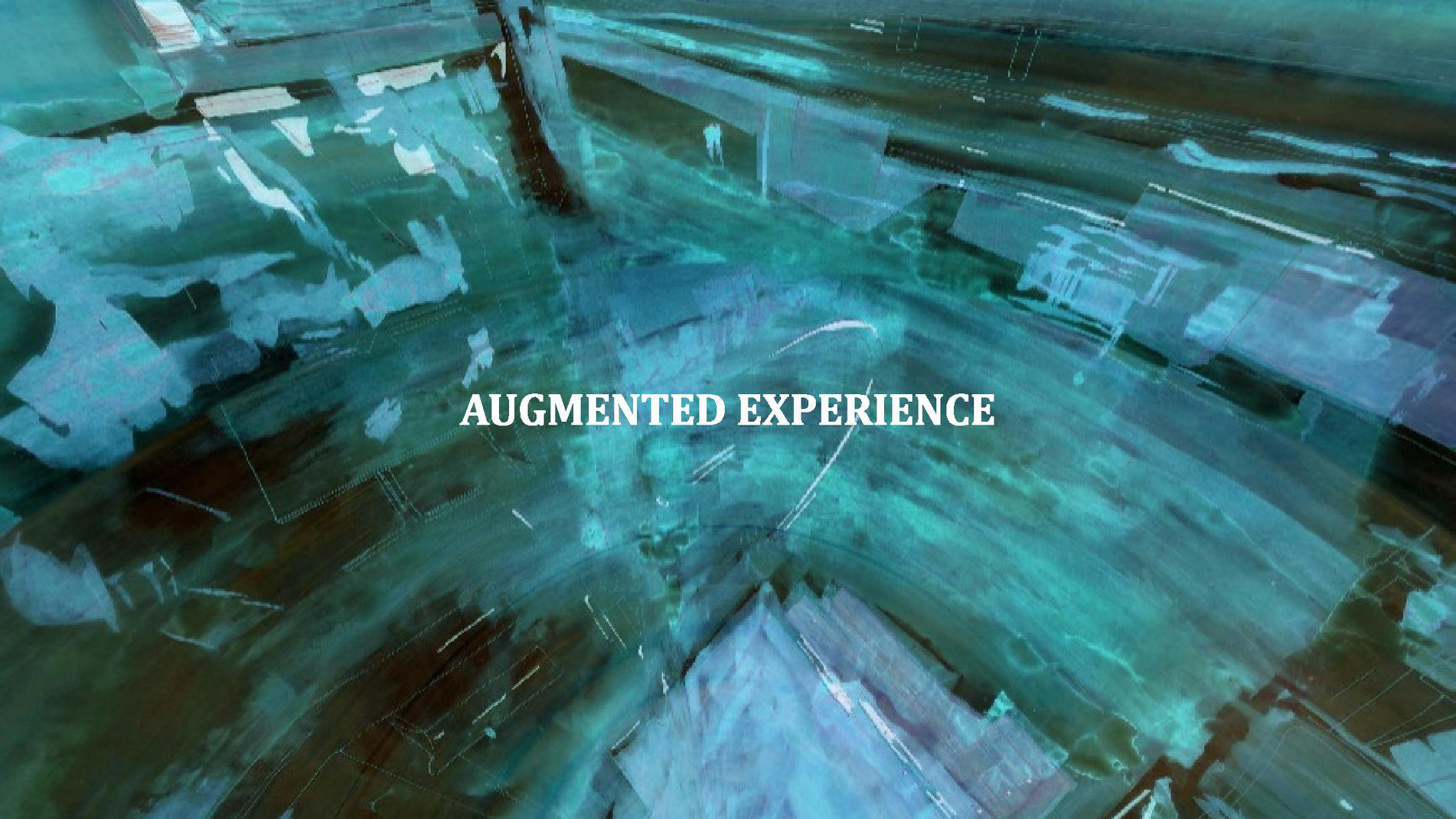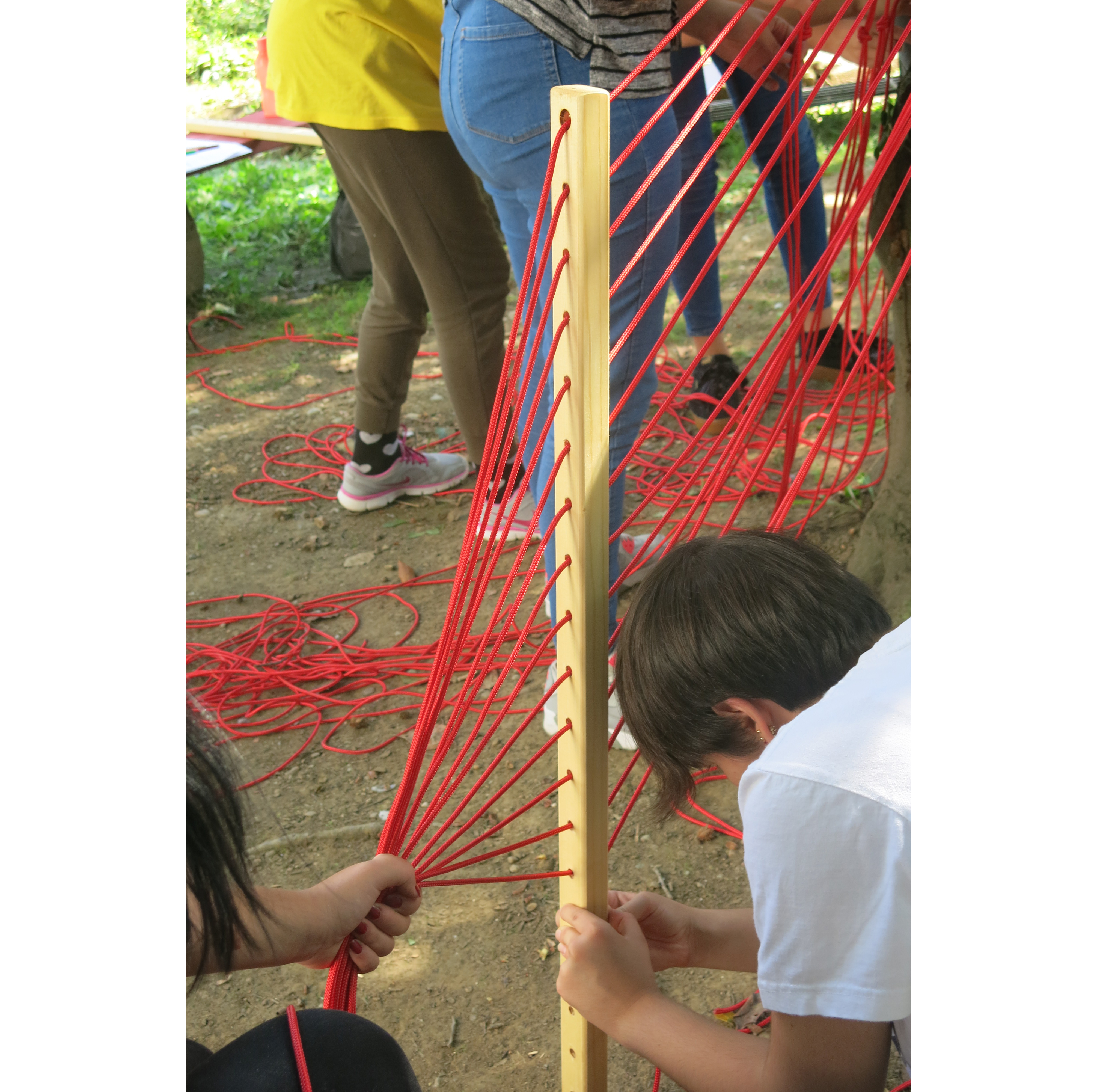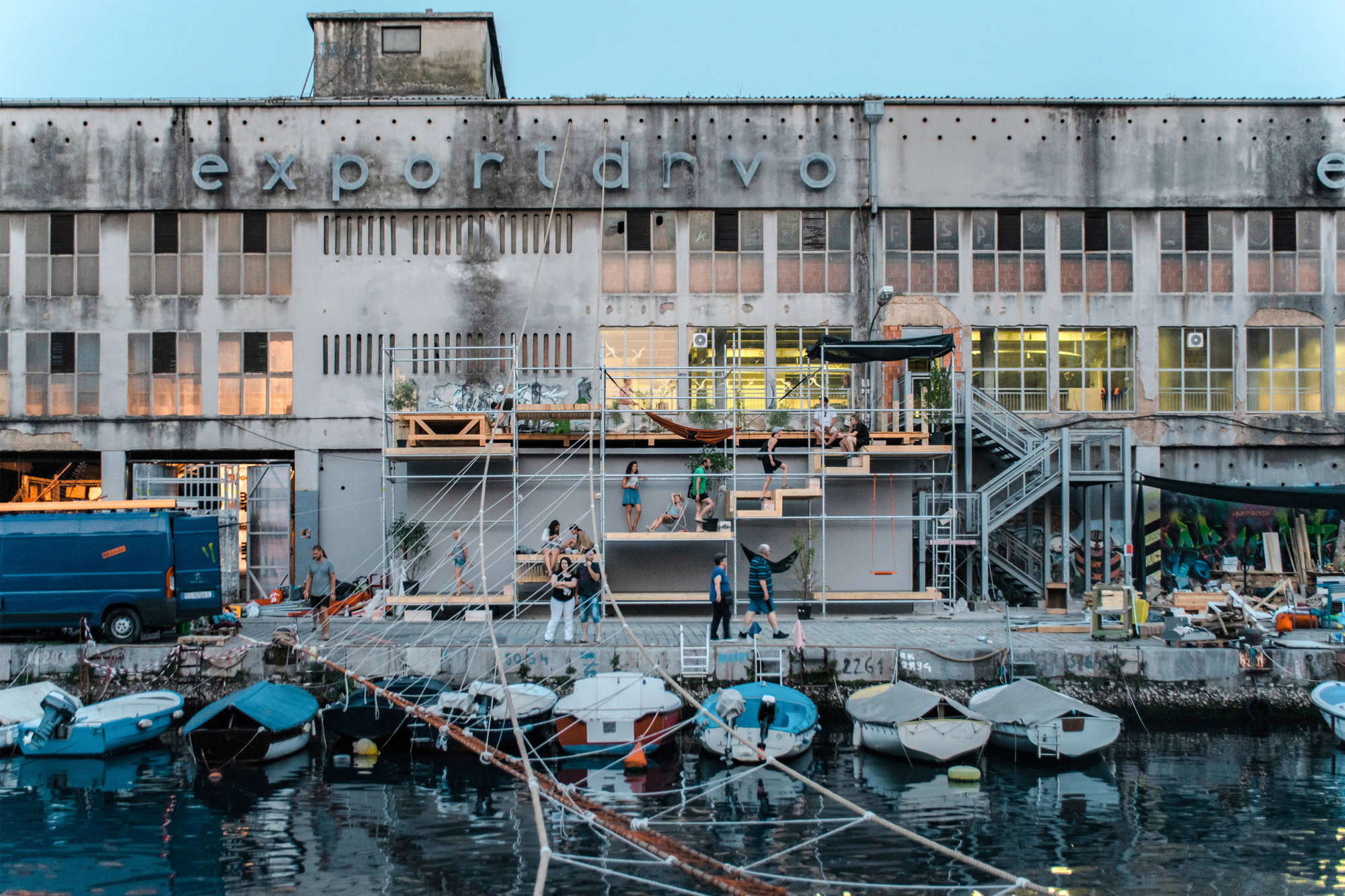In order to give you a closer look to what took place down in Rijeka on this year’s EASA, here’s an interview with amazing Augmented Experience workshop. They have disassembled Rijeka’s abandoned places, investigated them, took notes and drew, then put it all together and uploaded it for your hungry eyes. This project is for all of you who missed Rijeka’s magical urban pockets when you were there, but also for those who had seen them and know them well – this will warp your perspective of it! Workshop’s results are available in 3D here as well on the instagram page.
Hristina and Nikola, the workshop’s tutors joined us for an interview about their digitally analogue project. See what they have to say!
This year, EASA topic is RE:EASA. Famous RE is quite a wide theme and is susceptible to various of interpretations: What was your approach to the topic and how does AE answer to it?
H: RE was, in the terms of our workshop interpreted as a new experience of Rijeka. EASA’s topic was set quite contextually, with an intent that workshops would tackle the city they were in. We wanted our workshop to have a strong influence on the local surrounding, hence Augmented Experience is, exactly, a Reinterpretation i.e. transcription of an existing place using for it specific tools.
N: We wanted to make a workshop that we ourselves would also be interested in participating. Hristina and I met on a similar workshop, so we understood that it was equally important to create a welcoming atmosphere in the group, allowing participants to have fun and work in the same time, tying it all up with a result everyone of them could be proud of – let’s call it Augmented EASA Experience.
What is Augmented Experience?
N: Augmented Experience, aside being a workshop, is a spatial experience that is meant to stay with the participants even after the end of the workshop – experience of different perceptions of space, different scales, play with abstraction and the details. It is a completely different feeling when one and the same drawing is seen on paper, compared to seeing an enormous drawing of a crane , viewed through the VR glasses.
H: The workshop is devised with the idea of questioning the assumed symbolic relation between the analogue artistic techniques in architecture and virtual representation of space. Hence, analogue (manual) techniques of drawing are used for transcription of space, whereas the VR headsets are used for it’s observing. When you combine the two, you get a whole new augmented perspective of various urban spaces.
[Best_Wordpress_Gallery id=”183″ gal_title=”ae 1″]
Have you ever before worked with virtual space? How did you come up with this idea of combining analogue and digital techniques?
N: The topic of virtual space in architecture came to be through the mutual sympathy towards it during architectural studio work. In practice, over the years we have experimented with the techniques of creating virtual space, i.e. creating spherical images, photos and 3D models. With the development of smartphones, technology for this means of presentation has become available for everyone, and was popularized through the social networks. We had start experimenting with the graphical editing of these images, but then Hristina brought it to a whole new level in her scientific research through combining it with the analogue techniques.
H: Architectural drawing is the topic of my PhD at the Architectural faculty of Belgrade. Virtual reality as a hot topic in the world imposed itself as a whole new space for experimentation in the domain of (re)presentation of space through the architectural drawing. The idea of combining analogue and digital techniques has followed the need for a strain from very defined and controlled incidence of the digital line in the architectural drawing. The analogue is, in that sense, unexpected and points towards an inevitable presence of the author which is visible in every line of the rapidograph, indian ink or marker. Unforeseen “mistakes” are the uncontrolled artistic expression that exhales uniqueness that can’t be achieved through the use of digital technologies.
Digital, on the other hand, in the context of the presentation, allows endless possibilities of it’s overview. In that sense, use of digital technologies for generating virtual reality emphasizes the presence of the viewer giving them freedom in finding their perspective and experience of the image, therefore placing them in partially author position as a creator of different, always new worlds within it.
What would an “ideal participant” of your workshop have to know before the workshop – was the knowledge about the augmented reality necessary or did you see a creative potential exactly in the lack of knowledge in this field?
H: The ideal participant should know how to draw, ie to have a need for exploring. Combination of the two is exactly all we need. Basically, the workshop is about making freehand drawings… Augmented reality is just a new way of viewing them.
N: The ideal participant should be curious, should love architecture and drawing (even though they might not be the best artists). From the technical perspective, we needed smartphones, but it wasn’t necessary for every participant to have one. Through small exercises, the participants were introduced to different apps and possibilities of augmented and virtual reality, as well as with the techniques and tools for analogue drawing, hence there was no need for any out-of-ordinary pre-knowledge.
[Best_Wordpress_Gallery id=”184″ gal_title=”ae2″]
What does the process of AE workshop look like?
H: The workshop had lasted for two weeks and was made up of 9 participants in total… The whole workshop was consisted of two parts – research and design (drawing) part. The research implied familiarizing with the context of the place, through lectures, conversations and, of course, walks. First, research part was free and spontaneous and was quite improvised… The other one, design part, had upfront established methodology of work that implied a few group style exercises, with the aim of researching different drawing techniques, being actually an introduction for the individual work.
…
The process of the individual work was comprised of 7 steps in the frame of three phases of work – preparation, internally called pre-production, realisation, production, and digital editing, post-production.
In the preparation phase, participants were making the photo-sphere and developing them into 2D drawing. Through the production part they were making multi-level (multi-layer) free-hand drawings.
N: In post-production, the drawings were scanned which was also done using smartphones because of the ease of use in EASA conditions, followed by the next step of overlapping drawings and subtle photoshop editing – the only step that the use of computers was needed. Computer was also needed only for the means of publishing the results on the internet.
H: Production is the most creative part and post-production the most exciting one. Everyone was impatiently waiting for the 2D drawing to become a space one can access.
Rijeka has interesting history and urban plan developed on the triad of Yugoslavia, Italy and Austro-Hungarian empire. Through the workshop, you wondered around the city with your participants and were discovering new places. How did this architectural-urban setting influenced the workshop’s development?
H: I think that the rich historical context and stratification of spaces were key elements for variability of workshop’s results, which differed both in theme and technique.
N: It’s interesting that the participants have chosen different parts of Rijeka, that are quite far from one another. In that approach, the variability of themes and historical layers can be noticed, and for the workshop, the virtual guide made it easy to any of those locations from any other spot. It’s up to the users to decide whether they’d also, physically visit all those places.
All the locations you marked were really interesting. Of course, Rijeka doesn’t lack in that kind of uban pockets. What was the criteria for choosing locations and why these ones exactly?
H: Every participant had the freedom to pick a place of their choosing, that they found the most inspiring – reactions to the space were analytic and empiric. Some places were chosen because of emotional response, some based upon historical structure they posses, some because of their challenging constituting architectural elements, yet other as a direct answer to the EASA topic – Reinterpretation, Reactivation, Reinvention of the abandoned (industrial) spaces of Rijeka.
N: It was up to us to present to and discuss with our participants about the values and qualities that Hristina had mentioned, and the participants had complete freedom of choosing the locations.
Rijeka truly abounds with urban pockets so it wasn’t really hard to choose spaces with the potential of reactivation.
[Best_Wordpress_Gallery id=”185″ gal_title=”ae 3″]
How much freedom through the “analogue” did the authors have? Did you encourage your participants to give their interpretation of space or was the artistic note of this, rather objective research project achieved through the visual language of the drawer?
H: Artistic freedom was exactly the secret ingredient we were counting on when making the workshop. Interpretation of space and visual language are closely intertwined. Visual language is exactly the personal interpretation of space. We encouraged our participants to play with techniques and tools we had on our disposal.
N: Our initial idea and my personal relation towards architecture and architectural approach of creating is that there’s no one and only author, rather we wanted to incite authors to create in collaboration, in smaller groups, in order to simulate interaction that is present in every architectural studio. In that case, we can’t talk about creation as a caprice of one person, however, the group has collectively agreed on individual work and we had to back up their idea.
Was there any unexpected problems you had encountered? If so, did they strive the workshop towards an unforeseen end?
H: Material supply was the only challenge as it limited techniques for work. The workshop basically wasn’t too demanding in the matter of materials so all the potential problems were fixed ad hoc.
N: Partially, we could’ve expected some shortage of materials, because they are a physical thing, but we weren’t ready for the shortage of tables and chairs, wi-fi coverage or immense heat. The positive outcome was that the workshop was finished effectively two days before, so we had time to commit to the preparation of the exhibition, and the remaining time we invested in exploring beaches of Rijeka.
A word about your participants! Who are they, how did they accept your task and are they satisfied with the results (since it is widely known that in our profession, deadline means nothing and that the project can always have some more finishing touches)?
H: We were lucky to have the exact amount of participants to have a variety in results but also get to know all of them. We consider cultural differences as a great quality, especially in order to have a vast range of final results, and our participants come from all over the world: Finland, Poland, Georgia, Norway, Iceland, India, Moldova and Latvia.
N: The participants were great and hardworking when work needed to be done, and were an amazing group of friends. Our impression is that they were satisfied with the results because they have something to show to their friends and have learnt some new things. Speaking of deadline, their production was finished within the frame of the workshop, but the post production is continued well after – being publish in Tristotrojka being one of it.
[Best_Wordpress_Gallery id=”186″ gal_title=”ae 4″]
Did the participants, EASA, locations you have mapped manage to fulfill your expectations?
H: Of course! If we could do it again, we wouldn’t change a bit.
N: It depends on how you set up the expectations, whether you one is an optimist, realist, or a pessimist, but I can say that we are quite satisfied and inspired with the whole experience.
Although the results of the project are certainly site-specific, is there an initiative to do a similar workshop on another location and if so, can we hear some thoughts about it?
H: The methodology of the workshop is universal and what makes it exciting is exactly the possibility of realising it in different locations, both urban and rural. We hope we will be able to visit different places and work on different topics, which would open a possibility of further experimenting concerning the context-methodology-technique relation.
N: Every participant had learned the methodology, and we hope that the workshop’s influence would be felt through their work onwards and, why not, in other locations. We would definitely love to hold new workshops, and are open for collaboration.
See you guys in the next EASA?
H: We hope! With new and exciting workshop.
N: We’re just getting started!
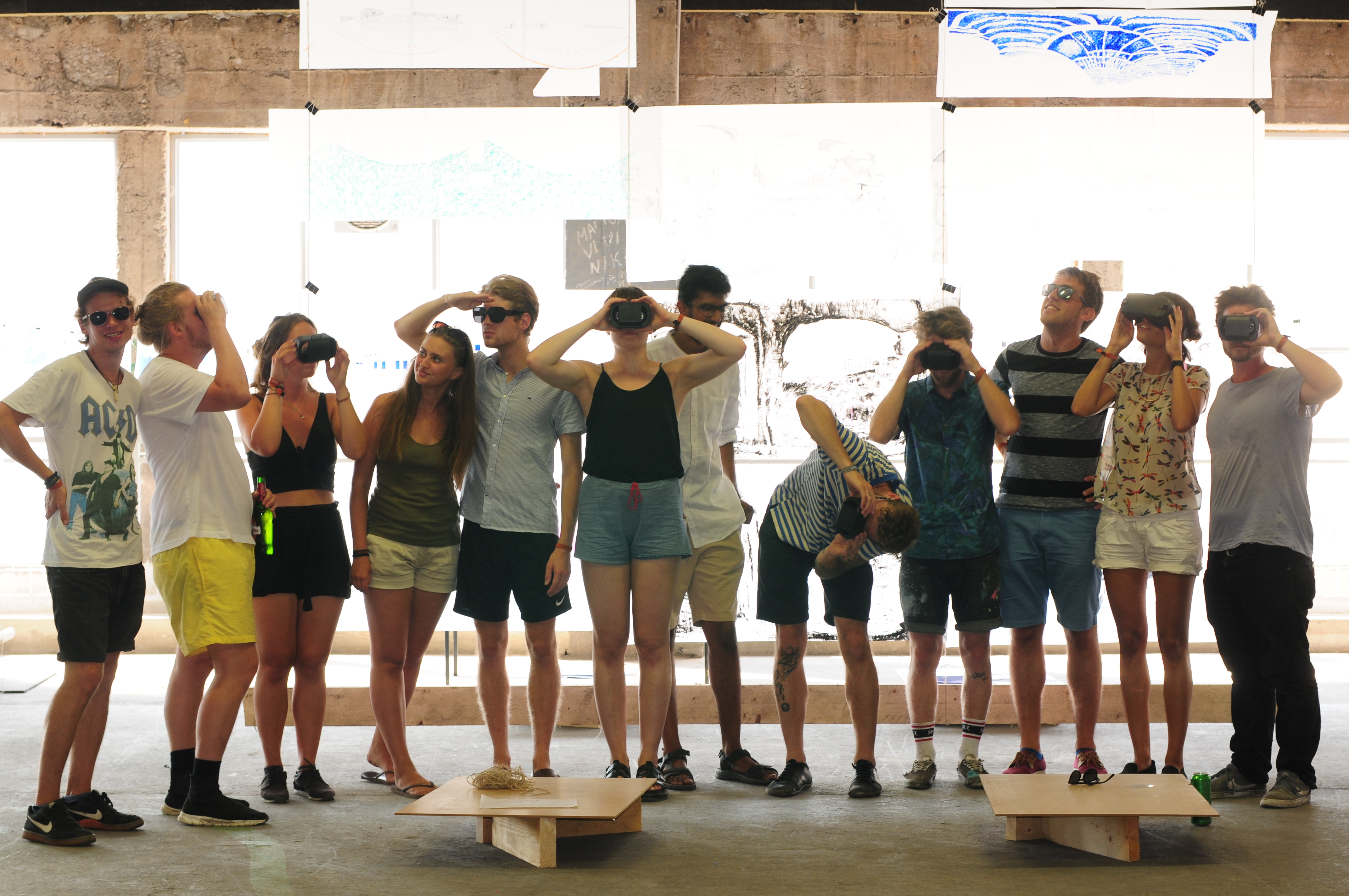
Tutors (interviewees): Hristina Stojanović, Nikola Milanović
Participants: Aniruddh Sharan, Elena Kaytaz, Flores Axel Böðvarsson Terry, Gogi Kamushadze, Hilda Uusitalo, Maciek Wewiór, Marte Aateigen Marum, Natalia Drożdżowska, Pāvels Osipovs
Collaborators: RE:MAP workshop by So & So Studio
Photographs: Augmented Experience + Jakob Schmitt
Interviewer: Igor Rajković
